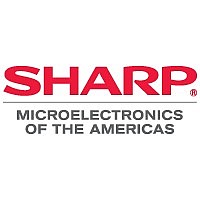LH28F160BGE-BTL10 Sharp Electronics, LH28F160BGE-BTL10 Datasheet - Page 9

LH28F160BGE-BTL10
Manufacturer Part Number
LH28F160BGE-BTL10
Description
Manufacturer
Sharp Electronics
Datasheet
1.LH28F160BGE-BTL10.pdf
(36 pages)
Specifications of LH28F160BGE-BTL10
Cell Type
NOR
Density
16Mb
Access Time (max)
100ns
Interface Type
Parallel
Boot Type
Bottom
Address Bus
20b
Operating Supply Voltage (typ)
3.3V
Operating Temp Range
0C to 70C
Package Type
TSOP-I
Sync/async
Asynchronous
Operating Temperature Classification
Commercial
Operating Supply Voltage (min)
2.7V
Operating Supply Voltage (max)
3.6V
Word Size
16b
Number Of Words
1M
Supply Current
30mA
Mounting
Surface Mount
Pin Count
48
Lead Free Status / Rohs Status
Not Compliant
device selection control, and when active enables
the selected memory device. OE# is the data
output (DQ
the selected memory data onto the I/O bus. WE#
must be at V
Fig. 9 illustrates read cycle.
3.2 Output Disable
With OE# at a logic-high level (V
outputs are disabled. Output pins (DQ
placed in a high-impedance state.
3.3 Standby
CE# at a logic-high level (V
standby mode which substantially reduces device
power consumption. DQ
in a high-impedance state independent of OE#. If
deselected during block erase or word write, the
device continues functioning, and consuming active
power until the operation completes.
3.4 Deep Power-Down
RP# at V
In read modes, RP#-low deselects the memory,
places output drivers in a high-impedance state and
turns off all internal circuits. RP# must be held low
for a minimum of 100 ns. Time t
after return from power-down until initial memory
access outputs are valid. After this wake-up
interval, normal operation is restored. The CUI is
reset to read array mode and status register is set
to 80H.
During block erase or word write modes, RP#-low
will abort the operation. RY/BY# remains low until
the reset operation is complete. Memory contents
being altered are no longer valid; the data may be
partially erased or written. Time t
after RP# goes to logic-high (V
command can be written.
IL
0
initiates the deep power-down mode.
-DQ
IH
15
and RP# must be at V
) control and when active drives
0
-DQ
IH
) places the device in
15
outputs are placed
IH
PHQV
PHWL
) before another
IH
), the device
0
-DQ
is required
is required
IH
or V
15
) are
HH
.
- 9 -
As with any automated device, it is important to
assert RP# during system reset. When the system
comes out of reset, it expects to read from the flash
memory. Automated flash memories provide status
information when accessed during block erase or
word write modes. If a CPU reset occurs with no
flash memory reset, proper CPU initialization may
not occur because the flash memory may be
providing status information instead of array data.
SHARP’s flash memories allow proper CPU
initialization following a system reset through the
use of the RP# input. In this application, RP# is
controlled by the same RESET# signal that resets
the system CPU.
3.5 Read Identifier Codes
The read identifier codes operation outputs the
manufacture code and device code (see Fig. 2).
Using the manufacture and device codes, the
system CPU can automatically match the device
with its proper algorithms.
3.6 Write
Writing commands to the CUI enable reading of
device data and identifier codes. They also control
inspection and clearing of the status register.
The Block Erase command requires appropriate
command data and an address within the block to
be erased. The Word Write command requires the
command and address of the location to be written.
Fig. 2 Device Identifier Code Memory Map
FFFFF
00002
00001
00000
Future Implementation
Manufacture Code
LH28F160BG-TL/BGH-TL
Reserved for
Device Code















